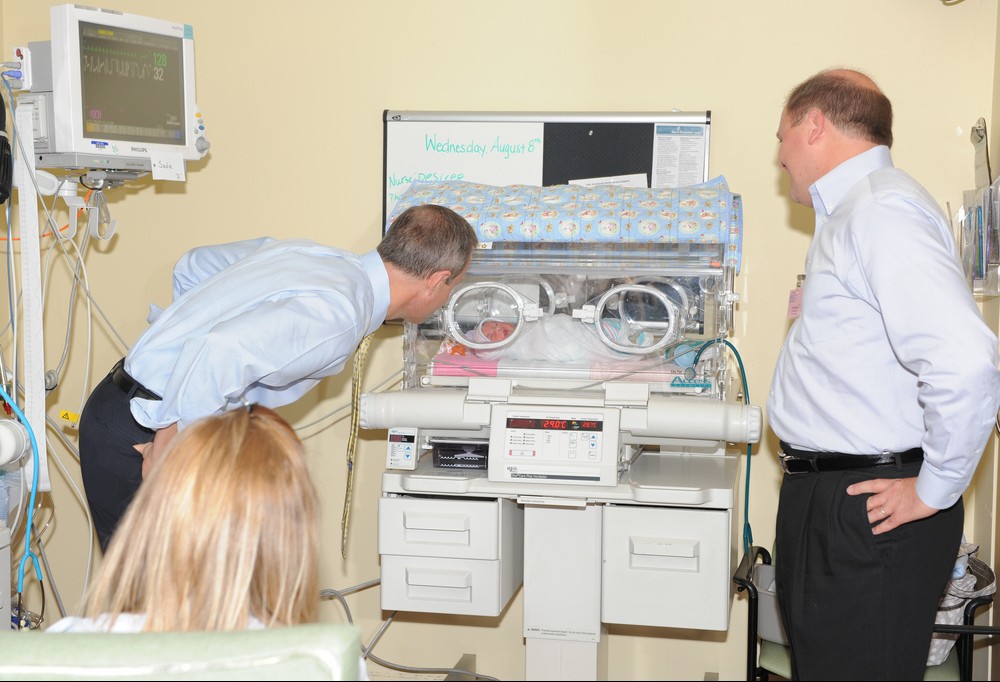
About Menkes disease
Menkes disease is a neurodegenerative disease linked to the X chromosome. The symptoms of the disease are linked to an impaired copper metabolism in these patients. The disease primarily affects male babies. In this disease, the levels of copper in the brain and the liver are abnormally low whereas they are relatively high in the intestinal mucosa and the kidneys. The defective gene responsible for Menkes disease is located on the long arm of the X chromosome at the position Xq13.3 and is named as ATP7A. This gene is responsible for the synthesis of proteins which regulate copper levels in the body. A defective gene means improper distribution of copper in the body cells.
- Important notification about information and brand names used in this slideshow!
- Photo courtesy of Maryland GovPics by Flickr : www.flickr.com/photos/mdgovpics/7752765586/
- en.wikipedia.org/wiki/Menkes_disease
- http://ghr.nlm.nih.gov/condition/menkes-syndrome
- http://www.nlm.nih.gov/medlineplus/ency/article/001160.htm
- http://medicine.med.nyu.edu/conditions-we-treat/conditions/menkes-syndrome

How common is Menkes syndrome?
The incidence of Menkes disease is believed to be between 1 in 50,000 births to 1 in 250,000 births. As the disease is linked to a recessive gene on the X chromosome, it is usually transmitted through unaffected female carriers to their male off springs. Females with X autosome translocations or XO/XX mosaicism may also be affected. A study carried out in Japan between 1993 and 2003 found that Menkes disease affected 1 in 2.8 million live births and 1 in 4.9 million live male births. The disease usually presents itself in infancy. Rarely, the onset of the disease has been reported in childhood or as late as early adulthood, but in these cases, the disease usually presents in a milder form.
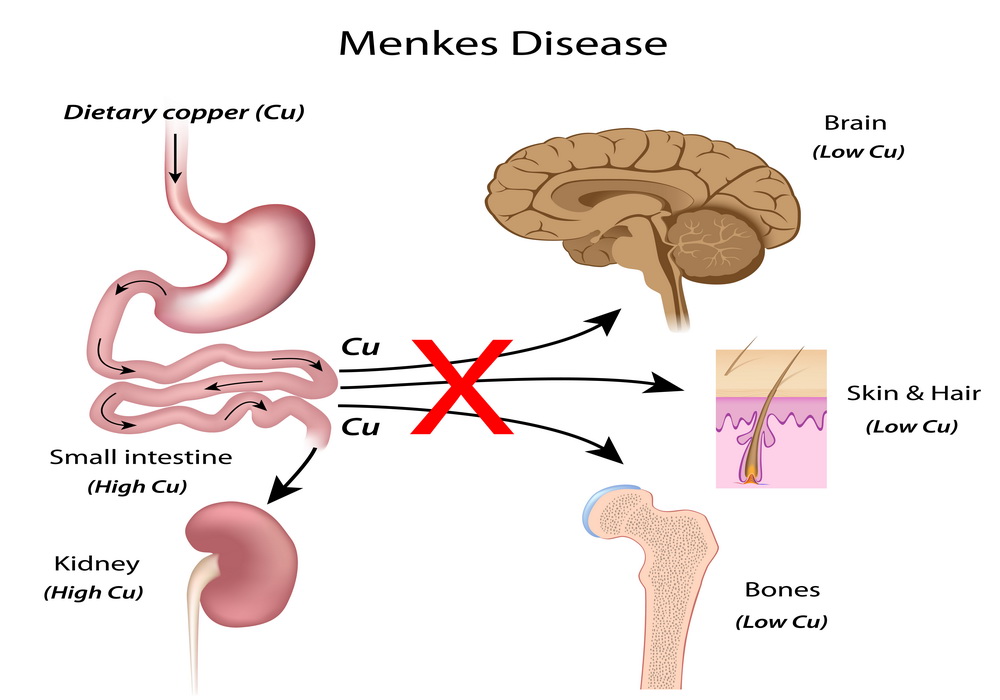
Manifestations of Menkes disease in children
Manifestations of the classical form of Menkes disease in children include silvery wiry hair, soft and lax skin, problems of connective tissue and neurologic problems which progress with time. The children suffering from Menkes disease are often born before term. The symptoms of the disease become identifiable usually three months after birth. The hair is sparse, tangled and can be easily broken. The cheeks of the baby are rosy and chubby. The nose bridge is flattened and the face is devoid of any expressions. Affected children appear healthy at birth and grow normally for 6 to 8 weeks before the symptoms of Menkes disease start to manifest.
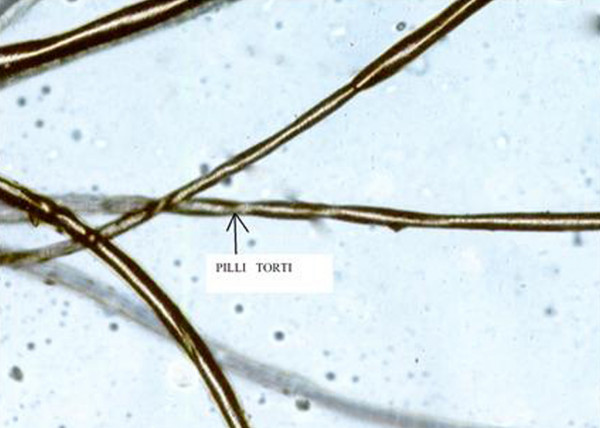
Symptoms of Menkes disease
Some of the commonly encountered symptoms of Menkes disease include: • Seizures • Floppy muscle tone • Difficulty in feeding • Subnormal body temperature • Chubby and rosy red cheeks • Tangled, coarse, sparse and colorless kinky hair which can be easily broken • Developmental delays • Flattened nasal bridge • Lack of expressions on face • Sagging skin of the face and pronounced jowls. • Intellectual disability • Failure to thrive • Osteoporosis • Abnormal development of vessel walls may lead to tortuous blood vessels. • Loose, lax skin especially at the nape of the neck, on the trunks and under the arms, a condition called as cutis laxa in medical parlance. • Abnormal growths in the bladder wall leading to bladder diverticulae. • The joints may be loose. • Delayed eruption of teeth
- Important notification about information and brand names used in this slideshow!
- Photo courtesy of Datta AK, Ghosh T, Nayak K, Ghosh M. Menkes by Wikimedia Commons : en.wikipedia.org/wiki/File:Menkes_disease3.jpg
- health.yahoo.net/galecontent/menkes-syndrome-1/3
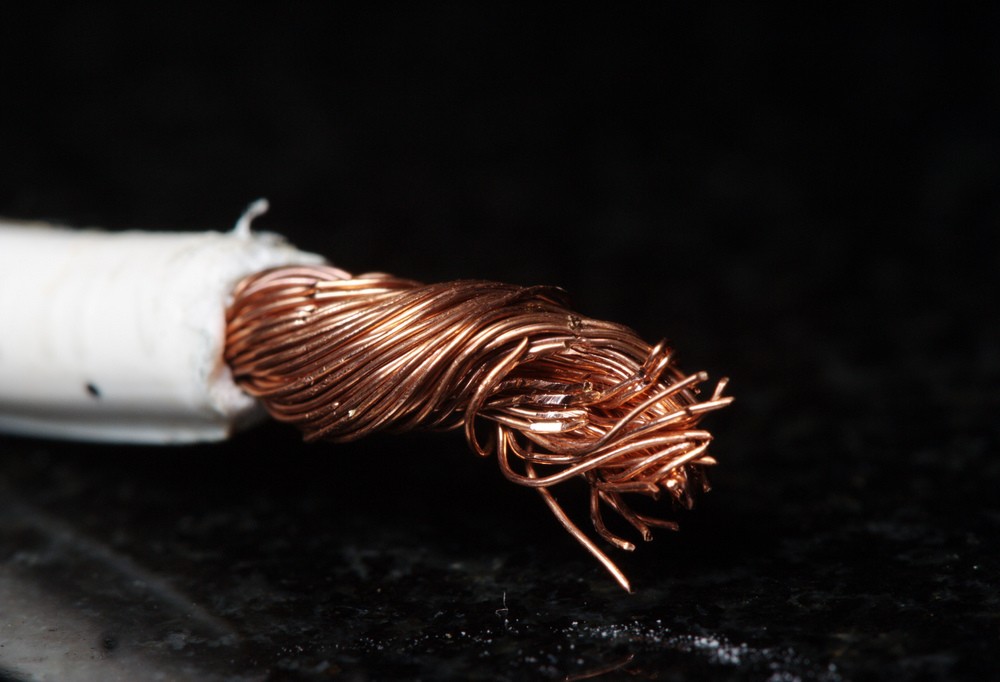
Copper's role in our body
Serum copper is extremely important for the proper functioning of several enzymes which control key metabolic reactions in our body. One such enzyme is lysyl oxidase which is responsible for the cross-linking of collagen and elastin. Deficiency of copper interferes with the proper functioning of this enzyme and leads to problems of the connective tissue. Similarly, copper is essential for the functioning of cytochrome c oxidase which is important for temperature regulation and tyrosinase which is important for pigmentation. #039400 represents Menkes disease on the Online Mendelian Inheritance in Man (OMIM) catalog. OMIM catalog is a continuous updated catalog of human genetic traits and disorders with particular emphasis on molecular relationship between mutations in genes and their phenotype expression.

Occipital horn syndrome
Occipital Horn syndrome is a milder form of Menkes disease which usually presents in childhood or early adulthood. It is also called as the X-linked cutis laxa syndrome. Patients of this syndrome show some residual ATP7A activity. Occipital horn syndrome is characterized by: • Wedge shaped calcium deposits in the occipital bone, a bone found at the base of the skull. These calcium deposits project as bony horns on both sides of foramen magnum. • Sagging and non-stretchy skin , which in medical terminology is called as cutis laxa • Coarse hair • Loose and hyper-extensible joints • Easy bruising • Ureteral obstruction • Bladder diverticulosis • Chronic diarrhea • Some of the patients of occipital horn syndrome may show developmental delays and mental retardation
- Important notification about information and brand names used in this slideshow!
- Photo courtesy of University of the Fraser Valley by Flickr : www.flickr.com/photos/ufv/9009237036/
- www.ctgt.net/find-a-test/tests/item/all-tests/occipital-horn-syndrome-ohs/

Causes/Genetics behind Menkes disease
In the body, a gene called as ATP7A, which is located on the long arm of the X chromosome at the position Xq13.3, is responsible for the production of enzymes that control distribution of copper in the body. Menkes disease is a disease caused by bad genes. There is a mutation of the gene ATP7A which results in uneven distribution of copper. While the brain and the liver are depleted of crucial copper, the metal tends to accumulate in the intestinal lining and the kidneys. Menkes disease is an X-linked recessive disorder which usually affects the male offsprings of asymptomatic female carriers.

Diagnosis of Menkes disease
The diagnosis of Menkes disease is made on the basis of several tests. • Initially, the child is subjected to a blood test to determine the levels of copper and ceruloplasmin in the blood. • If their levels are found to be low, the child is made to undergo a genetic testing to detect mutation of ATP7A gene. • The hair of the child is examined microscopically to look for any twisting or splitting. • X-rays are done to find any evidence of weakening or thinning of bones. X-ray of skull may reveal the presence of Wormian bones in case of Occipital horn syndrome. • An electroencephalogram may detect some abnormal electrical activity in brain characteristic of Menkes syndrome. • Magnetic resonance imaging of the brain is done to find out the size of the brain and any abnormality in the blood vessels.
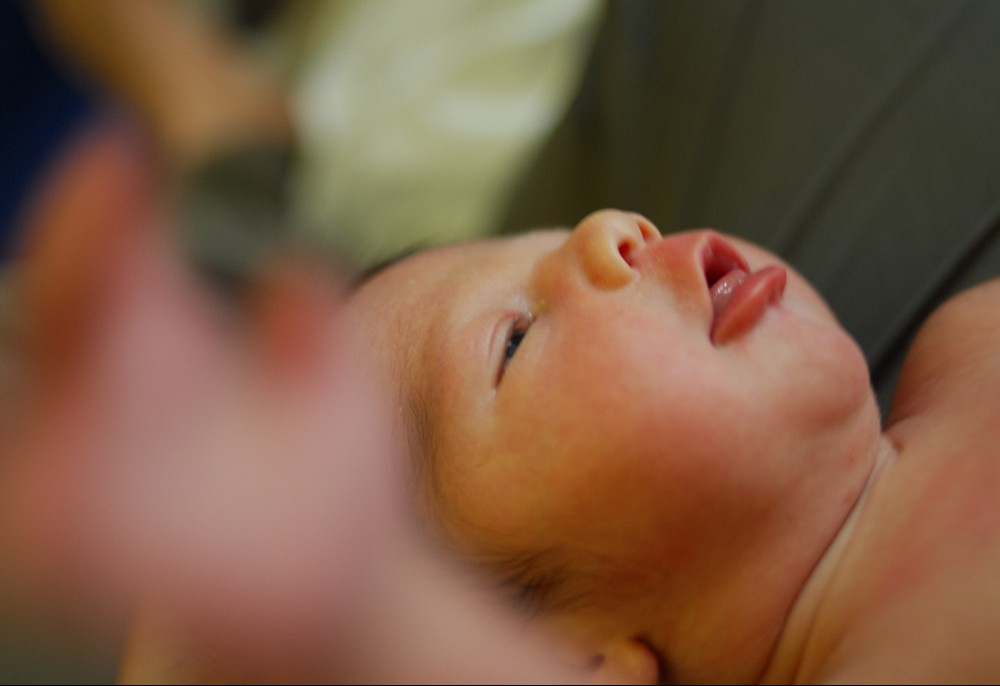
Treatment options for Menkes disease
There is no cure for Menkes disease. One can however, try to deal with the symptoms of the disease. Copper replacement is done by means of administering copper injections subcutaneously, intramuscularly or intravenously. However, the results obtained are mixed. The treatment works best when it is initiated early in the course of the disease within a few days of the birth of the baby. But, the modern newborn screening tests do not diagnose Menkes disease. Moreover, the symptoms of the disease are also difficult to detect in a newborn. So, the treatment is not initiated immediately after birth and hence, is often unsuccessful in achieving the desired results. Apart from copper injections, medications are given to deal with seizures or pain. The patients benefit a lot from occupational and physical therapy.

Prognosis and prevention of Menkes disease
Prognosis of patients suffering from classical Menkes disease is poor and the patients usually die by the age of three. Survival rates may be improved if copper replacement injections are started soon after birth. However, as there are no screening test to detect Menkes disease currently available for the newborns and as the symptoms of the disease are difficult to detect in the newborns, treatment cannot be initiated immediately after birth. Copper replacement at a later stage has not been found to be of much benefit. As the disease is genetic in nature and is transmitted by a faulty gene on the X chromosome, genetic counselling to the parents in case of a positive family history is the only way to prevent Menkes disease.


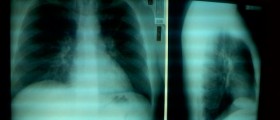
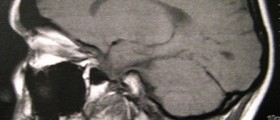















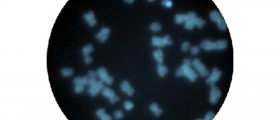


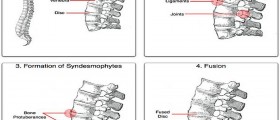




Your thoughts on this
Loading...